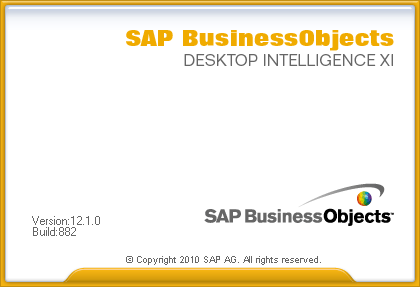Although many, including Hollywood, jumped on the 2012 end-of-the-world bandwagon, SAP is getting the party started earlier. For SAP BusinessObjects customers, the end of the world as we know it will occur in 2011 with the general availability of SAP BusinessObjects Business Intelligence 4.0 (code name Aurora). Folks in the beta program are revealing that Desktop Intelligence is not present in the SAP BusinessObjects Business Intelligence 4.0 distribution. While the temptation for some may be to go into shock, the news of Desktop Intelligence’s demise is really old news first announced as part of the XI roadmap in 2004 after then-BusinessObjects acquired Crystal Decisions. Desktop Intelligence was going to disappear “someday” and now we’re learning that “someday” is really 2011.
Disclaimer: I am not part of the SAP BusinessObjects Business Intelligence 4.0 beta/ramp-up program. Although I would like to get in, if somebody could please show me the secret handshake.
Desktop Intelligence, in previous versions known simply as “Business Objects”, “Business Objects Reporter”, or “the full client”, used to be the only reporting tool in the BusinessObjects arsenal. Although Web Intelligence had gone through several incarnations, it wasn’t until Web Intelligence XI R2 that the tool became powerful enough to handle most common reporting tasks. However, at the same time, Crystal Reports was fully integrated into the Business Objects product portfolio. Then Voyager appeared, soon to be reincarnated as Analytics (code-named Pioneer). And Xcelsius, uh, I mean SAP BusinessObjects Dashboard Design.
What we’ve seen from SAP and other vendors is that there isn’t “one BI tool that rules them all”, but instead tools focused toward specific user audiences and applications. In its day, Desktop Intelligence tried to cover all known bases. And although Web Intelligence incorporates most Desktop Intelligence features, it still doesn’t cover all of them even in the most recent XI 3.1 SP3 release.
So over the next few weeks, I’ll be exploring The End of the World as We Know It. Life without Desktop Intelligence. I’ll explore certain Desktop Intelligence features in XI R2 and XI 3.x and look at some strategies for living in a world without Desktop Intelligence.

Deski should go to sleep as long as webi will give all of its features and improve itself to the maximum.
My customer simply can’t work with Webi because of lack of specific chart types…
Everything will pass to the “Cloud” but organizations moving from deski to webi for the last time have to get insurance that there is no regression in the report capabilities.
While converting whatever report they have in Deski they should also get a tool that passes 100% of the reports: complex or simple, free hand or simple universe
Am I asking too much?
Yoav
There are gaps between deski and webi and some I expect will not be filled, for example, VBA macros as they wont run on unix.
It is worth keeping in mind that the purpose of the Crystal acquisition is to provide two reporting tool sets: WebI as an end user analysis tool and Crystal as an IT tool for developing complex reports.
I would think VBA macros, and to some extent free hand SQL, lie in the domain of complex reporting and so these features are supported in Crystal and we’re not likely to see them in WebI.
Having said that I do feel that WebI does lack some basic analytical functionalities. For example when analysing data, charting is normally first place to start. I would love to see a big improvement in webi charting, more diverse and feature rich charts, the ability to quickly add basic statistical features – straight line fitting, correlation analysis etc.
I’ll certainly be interested in your findings!
Dallas,
Should we start creating a wish list here ?
Yoav